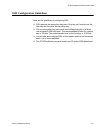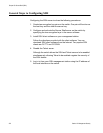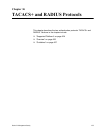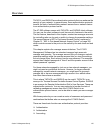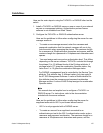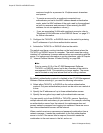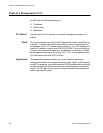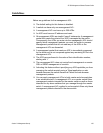
Chapter 36: TACACS+ and RADIUS Protocols
428 Section IX: Management Security
maximum length for a password is 16 alphanumeric characters
and spaces.
– To create an account for a supplicant connected to an
authenticator port set to the MAC address-based authentication
mode, enter the MAC address of the node used by the supplicant
as both its username and password. When entering the MAC
address, do not use spaces or colons (:).
– If you are associating VLANs with supplicant accounts, refer to
“Supplicant VLAN Attributes on the RADIUS Server” on page 371
for further information.
3. Configure the TACACS+ or RADIUS client on the switch by entering
the IP addresses of up to three authentication servers.
4. Activate the TACACS+ or RADIUS client on the switch.
The switch must have a routing interface on the local subnet where the
TACACS+ or RADIUS server is a member. The switch uses the routing
interface’s IP address as its source address when communicating with the
server. For background information on routing interfaces, refer to Chapter
27, “Internet Protocol Version 4 Packet Routing” on page 299.
Note
Prior to version 2.0.0 of the AT-S63 Management Software,
TACACS+ or RADIUS server had to be a member of the switch’s
management VLAN. This restriction no longer applies. The server
can be located on any local subnet that has a routing interface.
By default, authentication protocol is disabled in the AT-S63 Management
Software. Before activating it, you need the following information:
Select either TACACS+ or RADIUS as the active authentication
protocol. Only one authentication protocol can be active on a switch at
a time.
Specify the IP addresses of up to three authentication servers.
Specify the encryption keys used by the authentication servers.
You can specify up to three RADIUS or TACACS+ servers. Specifying
multiple servers adds redundancy to your network. For example, removing
an authentication server from the network for maintenance does not
prevent network managers from logging into switches if there are one or
two other authentication servers on the network.
When a switch receives a username and password combination from a
network manager, it sends the combination to the first authentication
server in its list. If the server fails to respond, the switch sends the
combination to the next server in the list, and so on.




